Amber Polo's Blog, page 17
November 8, 2011
How Writer's Relax - Ms. Cinsearae S.
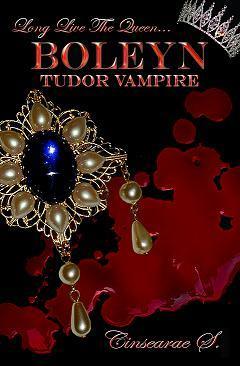
Amber: Welcome Ms.Cinsearae S. Since writing can be stressful, tell me whatstresses you. Ms. S: When I'm writingto my heart's content, day or night, and the ideas keep flowing, it's when theysuddenly 'stop'. I could be somewhere in the middle of the first draft, or nearthe end (the absolute worst) and absolutely nothing is coming to me. it's likethe river ran dry, for lack of a better term, lol. That's when I get a littlestressed out. I want to finsh that first draft, and it's like my muse decidedto take a vacation on me!
Amber: What keeps you arelaxed creative writer? Or brings you back when stress takes over? Ms. S: When my musetakes that vacation, I have no choice but to go and do something else for awhile. I love being out in nature, so taking hikes or bike rides through stateparks is right up my alley, and I always bring my camera with me, in case Icome across something interesting. And since it's my favorite time of year now,I'm always trying to find something Halloween-related to do-- a ghost tour,checking out an attraction, hayrides, or just raiding the Halloween stores,lol. It keeps me upbeat, not to mention gets my creative juices percolatingagain. Being focused on something entirely fun and leisurely definitely helpsto relax me. Amber: What things you do to relax. What worksfor you? Ms. S: Here's my list:
A hike/bikeride in the parkListening tomusic while jewelry-craftingCreatingcreepy dollsA glass of redwine while readingEnjoying thesilenceBelieve it ornot, when I'm 'working' on something else, like jewelry-crafting or dolls, ithelps to relax me, as I'm using another aspect of my creativity that doesn'trequire 'writing', lol. I love having red wine, although it tends to relax me abit too much if I have more than three glasses. I've found myself waking up infront of my PC screen a few times, lol. And to quote one of my favorite bands(Depeche Mode) I really do take time to 'enjoy the silence', especially in theearly morning hours, just before the sun rises. That has an immense relaxingeffect on me, and eases me into the day.
Amber: What advice canyou offer other writers?Ms. S: When you're in aslump, just take a step back, and turn off your PC for a while. Your writingisn't going to go anywhere. You can't 'force' creativity whatsoever, or else you'llstart churning out crap. And remember to 'breathe deeply often'. It really doeshelp. Amber: Since fiction isfilled with conflict, what do your characters do to release stress?
Ms. S: Come to think ofit, not too many of my characters de-stress, since I love writing darkparanormal romances and horror, lol. But there have been occasions where theygo someplace quiet to think about what to do next, lol.
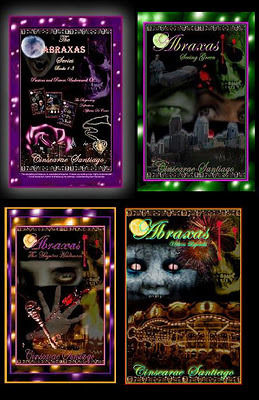
Award-winningauthor and artist Ms. Cinsearae S. is Editor/Publisher of Dark GothicResurrected magazine, and is a graphic designer for Damnation Books andindependent authors. She won the Golden Horror award from Horrorfind.com, andlanded first place in the National Horror Convention's short story competitionthis year. She loves Vincent Price flicks, photographing cemeteries, andwatching Tim Burton movies. Visit her at http://BloodTouch.webs.com
Links to Books by Ms. Cinsearae S.:
The ABRAXASSeries: Books 1-3, ABRAXAS: Seeing Green, ABRAXAS: The Haywire Halloween, ABRAXAS: Urban Legends
BOLEYN: TudorVampire
Published on November 08, 2011 02:21
November 5, 2011
Does Your Palm Reveal You Are A Writer?
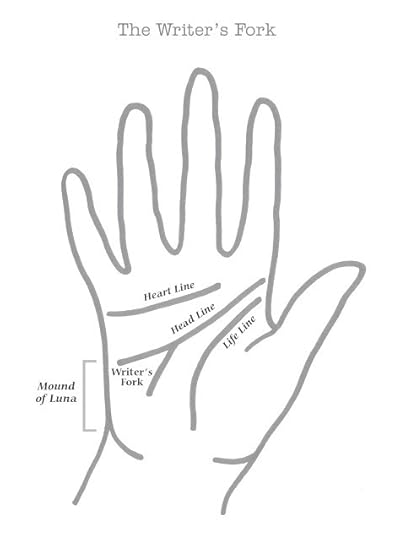 While researching Relaxing the Writer, i discovered the "Writer's Fork."
While researching Relaxing the Writer, i discovered the "Writer's Fork.""Palmistry (cheirology)proponents claim that if a palm has a tassel-like fork at the end of the HeadLine on the mount of Luna, the person possesses creative ability with words.This "Writer's Fork" shows that you are versatile, curious, and inventive.The deeper into Luna the Head Line ends, the more frequently the person willretreat into imaginary worlds. The wider the fork, the more adaptable andresourceful you are." Excerpt from Relaxing the Writer
To learn more, It's my pleasure to have have as my guest Ken A. Lagerstron, an expert on the human hand.
Ken, what is the "writer'sfork" and what does it mean?
Ken: The "writer'sfork" is where the line of head ends by splitting into two stronglines. It has been associated with natural talent in the writtenword. The longer and clearer the fork is marked on the palm, the greaterthe writing ability.
Amber: What if you have one on one hand only? (That's me - on my right hand.)Ken: Generallyspeaking, the dominant hand shows the person's actual development, while thenon-dominant hand shows latent talents and potential. A writer's fork onthe dominant hand is much more likely to indicate a professional writer.
Amber: If you lack a fork, should you stop writing?Ken: Definitely not - mostpeople's hands do not have this marking. The writer's fork is merely onesingle sign that indicates literary ability. Most people with the markingwill at least try their hand at professional writing, but since more palms donot have it, the majority of professional writers do not actually have thissign.
Amber: Are there variation in the forks a writer might find?Ken: A clear fork with only2 branches is much more likely to indicate literary ability than a tasseledending. The tassel shows more of a dissipation of energy rather thanclear use. A writer's fork with tasseled endings would typically show aregular urge to write, but that the effort is not taken to actually do thewriting.
The location of the branches of the writer's fork show what type of writing thetalent is for. A branch ending on the mount of Mars (a horizontal line ofhead) shows talent for non-fiction such as news reporting or biographies. A branch ending at the top of the mount of Luna reveals talent for fiction orsci-fi. Branches ending on the middle of the Luna mount, or lower, showthe talent is for fantasy writing. Amber: Are there other parts of the hand that indicate creativity? Ken: The mounts of Luna andApollo are typically viewed as showing creativity, as is the presence of aclear line of Apollo (Sun Line).
Some Definitions -
Cheirology- ("Cheiro"=Hand, "ology"=a science, or branch of learning)The study of all subjects dealing with the hands.
Palmistry - The art of reading the past life orfuture of a person by the lines and marks in the palm of the hand.
The Line of Head - The Line of Head reveals the basicmentality, cognitive abilities, and insanity. Abnormalities on this line showperiods of mental stress and/or brain conditions.
The Mount of Luna - Imagination, Reproduction, Fear, Sexuality.
Amber: One more question. Are the prints on aperson's palms the same on each hand or are they different?
Ken: The prints on a person's left and right palms are normally similar, but with afew distinct differences. Some people have 2 palms that are quite different inline placement (especially those with the Simian Line formation, where thelines of head and heart form one single line - http://www.humanhand.com/simian.html). The non-dominant hand can beconsidered to show the natural talents and personality traits, while thedominant hand shows where the individual makes changes to their life path (forbetter or worse).
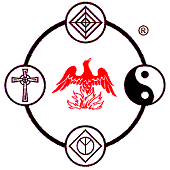
KennethA. Lagerstrom My father has no hands, which as ayoung child I believed to be perfectly normal and natural. I was eight yearsold when the school librarian was given the arduous task of proving to me thatmy own hands wouldn't fall off one day. Her efforts began a life-long studyinto the wonders of Cheirology. Over the years the search has taken me on abizarre journey through topics with only the hands in common: Palmistry,Chirokinesics, meditation hand positions, Laying of Hands, slight-of-hand,Burning Palm, Iron Palm, reflexology.... the list goes on and on. (I used to bea member of Mensa Canada, which explains a lot.)
Ever since mydaughter was born in 2003, I've had the privilege of being a"stay-at-home-dad" while continuing my study of the hands. I takecare of all the website maintenance myself for both sites and a current memberof the InternationalSociety for Gesture Studies (ISGS).
HumanHand.com was started back in 1998, andcontinues to be one of the most viewed hand-related sites on the internet.
To learn more about palmistry,have a reading, or take a course, check out Ken's website HumanHand.com or email: ken@humanhand.com
Sign up for his newsletter or download the free ebook Laymans Guide toCheirology .
Published on November 05, 2011 01:00
Does Your Palm Reveal You Are a Writer?
 While researching Relaxing the Writer, i discovered the "Writer's Fork."
While researching Relaxing the Writer, i discovered the "Writer's Fork." "Palmistry (cheirology)proponents claim that if a palm has a tassel-like fork at the end of the HeadLine on the mount of Luna, the person possesses creative ability with words.This "Writer's Fork" shows that you are versatile, curious, and inventive.The deeper into Luna the Head Line ends, the more frequently the person willretreat into imaginary worlds. The wider the fork, the more adaptable andresourceful you are." Excerpt from Relaxing the Writer
To learn more, It's my pleasure to have have as my guest Ken A. Lagerstron, an expert on the human hand.
Ken, what is the "writer'sfork" and what does it mean?
Ken: The "writer'sfork" is where the line of head ends by splitting into two stronglines. It has been associated with natural talent in the writtenword. The longer and clearer the fork is marked on the palm, the greaterthe writing ability.
Amber: What if you have one on one hand only? (That's me - on my right hand.)Ken: Generallyspeaking, the dominant hand shows the person's actual development, while thenon-dominant hand shows latent talents and potential. A writer's fork onthe dominant hand is much more likely to indicate a professional writer.
Amber: If you lack a fork, should you stop writing?Ken: Definitely not - mostpeople's hands do not have this marking. The writer's fork is merely onesingle sign that indicates literary ability. Most people with the markingwill at least try their hand at professional writing, but since more palms donot have it, the majority of professional writers do not actually have thissign.
Amber: Are there variation in the forks a writer might find?Ken: A clear fork with only2 branches is much more likely to indicate literary ability than a tasseledending. The tassel shows more of a dissipation of energy rather thanclear use. A writer's fork with tasseled endings would typically show aregular urge to write, but that the effort is not taken to actually do thewriting.
The location of the branches of the writer's fork show what type of writing thetalent is for. A branch ending on the mount of Mars (a horizontal line ofhead) shows talent for non-fiction such as news reporting or biographies. A branch ending at the top of the mount of Luna reveals talent for fiction orsci-fi. Branches ending on the middle of the Luna mount, or lower, showthe talent is for fantasy writing. Amber: Are there other parts of the hand that indicate creativity? Ken: The mounts of Luna andApollo are typically viewed as showing creativity, as is the presence of aclear line of Apollo (Sun Line).
Some Definitions -
Cheirology- ("Cheiro"=Hand, "ology"=a science, or branch of learning)The study of all subjects dealing with the hands.
Palmistry - The art of reading the past life orfuture of a person by the lines and marks in the palm of the hand.
The Line of Head - The Line of Head reveals the basicmentality, cognitive abilities, and insanity. Abnormalities on this line showperiods of mental stress and/or brain conditions.
The Mount of Luna - Imagination, Reproduction, Fear, Sexuality.
Amber: One more question. Are the prints on aperson's palms the same on each hand or are they different?
Ken: The prints on a person's left and right palms are normally similar, but with afew distinct differences. Some people have 2 palms that are quite different inline placement (especially those with the Simian Line formation, where thelines of head and heart form one single line - http://www.humanhand.com/simian.html). The non-dominant hand can beconsidered to show the natural talents and personality traits, while thedominant hand shows where the individual makes changes to their life path (forbetter or worse).

KennethA. Lagerstrom My father has no hands, which as ayoung child I believed to be perfectly normal and natural. I was eight yearsold when the school librarian was given the arduous task of proving to me thatmy own hands wouldn't fall off one day. Her efforts began a life-long studyinto the wonders of Cheirology. Over the years the search has taken me on abizarre journey through topics with only the hands in common: Palmistry,Chirokinesics, meditation hand positions, Laying of Hands, slight-of-hand,Burning Palm, Iron Palm, reflexology.... the list goes on and on. (I used to bea member of Mensa Canada, which explains a lot.)
Ever since mydaughter was born in 2003, I've had the privilege of being a"stay-at-home-dad" while continuing my study of the hands. I takecare of all the website maintenance myself for both sites and a current memberof the InternationalSociety for Gesture Studies (ISGS).
HumanHand.com was started back in 1998, andcontinues to be one of the most viewed hand-related sites on the internet.
To learn more about palmistry,have a reading, or take a course, check out Ken's website HumanHand.com or email: ken@humanhand.com
Sign up for his newsletter or download the free ebook Laymans Guide toCheirology .
Published on November 05, 2011 01:00
November 1, 2011
How Writers Relax - Renee Wildes
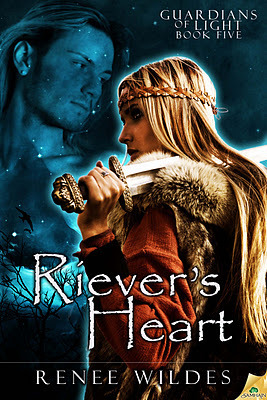
Welcome Fantasy Romance Author Renee Wildes!
Amber: What stresses you about your writing? Renee: Writing is only one of my three jobs - I have a full-time day job and two kids with homework and school/sports obligations. I fight guilt every time I try to write, or WORSE do promo b/c my kids compete for very limited time. I wish I didn't have to sleep. And with an unemployed husband, the pressure to single-handedly pay all the bills can make it very hard to concentrate.
Amber: What keeps you a relaxed creative writer? Or brings you back when stress takes over? Renee: I am a huge fan of alternative/"new age" music. I love Enya, Kate Price (hammer dulcimer) or South/Central American pan flutes, Kitaro Best of Silk Road. I also love Native American, Celtic and Nordic music. I've got my kids singing to Barrage! (Although they'll probably deny it!)Amber: What ways to relax work for you? Renee: Here's my list: Scented Candles Hot Bubble Baths Soft Music Curling Up With A Good Book Scrapbooking Pet Therapy (Petting/Walking Dog - we have a very fluffy black Chow) Horse Therapy (we have 2 half-Arab mares - grooming & riding them is very relaxing) [image error] Amber: Tell me more about your horses.Renee: I love my horses, and going out to the farm with my daughter is very relaxing. I love the smell of sun-warmed horses, hay & leather. The horses are very nosy and come right up to the fence. Just walking through the pasture, listening to them munching grass and swishing flies just makes the stress melt away. We have a lot of trails just up the road from the farm where they board, and riding through the woods on an old logging trail (there are places where you can get off and pick blackberries and raspberries). All you hear is the creak of leather, the calls of jays and squirrels, the occasional snort of a horse and the clop of unshod hooves. You can smell the fallen leaves, rich earth, sun-warmed leather and sweaty horse (also the tang of fly spray). It's a multi-sensory experience. Your body works and your mind empties. You can strictly be IN THE MOMENT. For that time, nothing else exists. It's funny how horses make their way into my books...
Amber: What advice can you offer other writers?Renee: Always make sure you leave yourself some "me" time. I know with jobs and families it can be challenging. I KNOW. You have to fight the guilt. But if Mama loses it, they all lose it. So sometimes you have to take a step back and just tell the world, "I need a moment." Go somewhere you can shut the door. Comfy chair, light a candle or two, put on some relaxing music - and BREATHE. Whatever time you have - even 5 minutes - of just BEING & BREATHING can help you re-find your center.
Amber: Since fiction is filled with conflict, what do your characters do to release stress?Renee: My elves have their royal spa. My Shamaru gypsies have music & dancing. My selkie heroine Finora braided hemp lines for her fishing nets. My assassin nun Maleta loved kids. My elven heroine Verdeen loved horses. My paladin Cianan played the flute. My hero Aryk had his dog Fiske. They all had a release valve. You have to. People have to. If you want your characters to seem like real people, then they do too.
Renee Wildes grew up reading fantasy authors Terry Brooks and Mercedes Lackey and is a huge Joseph Campbell fan, so the minute she discovered romance novels it became inevitable that she would combine it all and write fantasy romance. Renee is a history buff, from medieval times back to ancient Greece and Sparta. As a Navy brat and a cop's kid, she gravitated to protector/guardian heroes and heroines. She's had horses her whole life, so became the only vet tech in a family of nurses. It all comes together in her Guardians of Light series for Samhain – fantasy, action, romance, heroics and lots of critters!
Find Renee at:
Her Blog
And
Samhain
Published on November 01, 2011 01:38
October 31, 2011
Stretching at you Desk
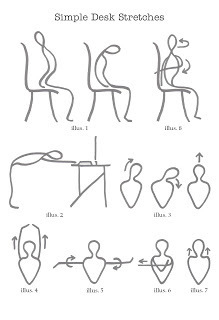
Take your hand off that mouse!
Push your chair away from the computer!
Takea break and stretch before muscles spasm. Stretching allows you to sit andwrite longer without getting out of your zone.
Simple Desk Stretches
SeatedCat-Cow Back Stretches - (illus. 1) Sit tall towards the front of yourchair. Inhale into a gentle backbend. Look up. Exhale and let the back roundfrom the base of the spine to the crown of the head. Keep moving back and forthwith the breath. ForwardBends - Bending forward stretches the back and shoulders and lowers your head below yourheart to bring blood to the brain for a quick pick-me-up. See more forward bendillustrations in Easy Yoga Poses (page 83).•Push back from your desk. Sit near the edge of your chair.Legswide, feet on the floor. Inhale. Reach arms up or rest your hands on yourknees. Exhale and hinge forward. (If necessary use a pillow on your lap for support.)Keep the spine extended. Relax. Take a few deep breaths. Try to let your head hanglower than your hips. Continue slow deep breaths. When ready, use your hands tosupport you back to sitting.•Move the chair further back. Sit with legs wide. Straighten arms and place palmson desktop. Hinge forward from hips. Keep back long and straight and shouldersextended in a comfortable stretch. Allow head to hang slightly lower thanshoulders. Breathe.•Stand an arm's length from your desk and place hands on the desktop. (illus. 2)Hinge forward from hips. Keep back long and straight and shoulders extended.Take slow deep breaths. NeckStretches -(illus. 3)•Sit tall. Imagine the crown of your head reaching towards the ceiling. Inhale.Slowly rotate your face up, keeping the feeling of length in the neck. Exhale,bringing the chin towards the chest. Repeat, slowly, three times. Next, elongatethe neck, exhale, moving your right ear in the direction of your right shoulder.Inhale back up. Alternate sides.•Imagine a pencil balanced (point up) on the top of your head. Sit tall in yourchair. Keeping the upper body still and your neck relaxed, write your name on theceiling (or the clouds). Jaw& Face - Press the tongue lightly against the roof of your mouth behind the frontteeth. Allow lips to part slightly. Open mouth as wide as you can. With mouthopen, lightly press fist under chin and use jaw to press down. Repeat. Arms - (illus. 4)Sit up straight. Raise arms over head. Clasp hands and stretch up, liftingtorso out of waist. Reverse hand position so palms face the ceiling. Take threeslow deep breaths. Release. (illus. 5) Stretch arms out to the sides.Alternatively rotate one arm forward and one backward. Next, flex one palm upand the other down. Alternate.
Shoulders
ShoulderStretch - (illus. 6) Stretch right arm in front of you. Using left hand, pull the rightelbow toward the left shoulder. Breathe into the stretch. Change sides. ShoulderShrugs - (illus. 7) Relax shoulders. Pull them up as high as you can. Release. Pull shoulderblades back and together. Squeeze shoulders forward towards the front of yourchest. Repeat.
Not So Simple Shoulder Rolls 1.Circle both shoulders forwards simultaneously. Then circle both backwards.2.Alternate forwards (Start with left lifted and right low.Circleboth forwards). Alternate backwards.3.Opposite simultaneously (both forwards, left lifted, right low). Oppositesimultaneously (backwards).4.Opposite alternate (left forwards, right backwards).Oppositealternate (right forwards, left backwards).
Asyou might guess, this exercise from Martin Gray'sNomatics also engages the mind.
HipCircles- Sit tall. Keeping hips solidly on the chair, move the torso in a circleseveral times. Reverse.Legand Hip- Sit up straight with both feet on floor. Place right ankle on left knee.Elongate upper body. Lean forward slightly, keeping back straight. Circleankle. Change sides. Stretch out left leg and straighten from hip to heel. Changesides.
Feet Stretchout one leg, Flex and extend foot. Next, circle the ankle. Keep toes relaxed todiscourage cramping. Change sides.Placea tennis ball beneath the arch of the foot. Move foot and roll ball. Breathe.
Twist - (illus. 8)Twists should be done after forward, backward, and side stretches have warmedthe back muscles. Sit sideways, or if your chair has arms, toward the frontedge. Turn towards the right and exhaling reach the left arm across the chest,towards the right side of the back of the chair, twisting gently to the rightand looking over your right shoulder. Sit tall and keep shoulders down. Don'tforce. Only twist to 90% of your maximum. Inhale back to the center. On eachinhale elongate and on the exhale twist. Alternate sides. Twists wring out yourspine like a wet towel.
See also the chapters on: Self-Massage, Hand Stretches, Rolling & Passive Stretches, and EasyYoga Poses.
"Besides thenoble art of getting things done, there is a nobler art of leaving thingsundone. The wisdom of life consists in the elimination of nonessentials."Lin Yutang
[image error] Excerpt from: Relaxing the Writer:Guidebook to the Writer's High by Amber Polo
Available from Amazon, Barnes & Noble & Smashwords
Published on October 31, 2011 01:22
October 29, 2011
How Writers Relax - Vonnie Winslow Crist, Gardener
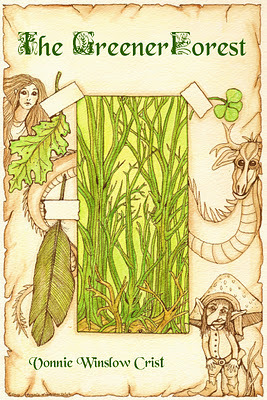
Welcome, Vonnie Winslow Crist, Fantasy writer &illustrator!
Amber: Talk about what stresses you about your writing.Vonnie: For me, I become nervous when there isn't time to becreative. Then, when I finally can grab a chunk of time to write, I need tounwind and get ready to drift into that other world where my characters live.Sometimes, when my characters are going through a particularly stressful event,I feel stressed out, too. And I hate to be interrupted when I'm totallyimmersed in the world of my fiction. The submission process is alsonerve-racking for me. It's not just the rejections, but the wait – theuncertainty about the fate of a piece of writing or artwork.
Amber: What keeps you a relaxed creative writer? Or brings youback when stress takes over?Vonnie: First, it's my love of the creative process. When I toss outall the distractions and extra stuff that clutter my writing life – at the coreis my need to write, to create, to share with others the magical worlds of myimagination and dreams. And secondly, it's my love of the written word. Believeit or not, sometimes just leafing through the dictionary or thesaurus andreading quirky words reminds me of the joy of language.
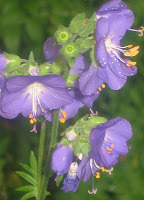
Amber: What things help you relax?Vonnie: To relax before beginning the writing process, sometimes Iread or watch part of a familiar movie. As I'm taking notes or getting thingsin order to begin writing, I listen to music: Celtic, Stevie Nicks, Enya,Heart, etc. I find the music needs to match in some way the project I'm workingon. Sometimes a couple of deep breaths and a stretch or two help. But I thinkfor me, when I'm really stressed the best relaxer is going outside for a fewminutes of weeding, strolling in the garden, or taking the dog for a walk. Whentaking a break from a project, I've also found drawing, embroidery, andjewelry-making are effective stress-relievers.
Amber: What's your first choice to relax?Vonnie: My best de-stresser is gardening. (Okay, I not certainthat's a word, but it's what gardening does for me). If I'm especiallyirritated at a rejection letter or being interrupted while I was in that otherworld of writing, I feel so much better after yanking a bunch of weeds out ofthe ground. I think both the physical exertion and the visual image of removingobstacles that stand in the way of my flowers thriving are helpful.
 Also, the sensory stimulation of gardening is relaxing. Ilisten to the birds conversing in the trees, the squirrels chittering, thecicada humming, the wind in the leaves, and the distant sound of cows. I seebees zipping from blossom to bloom, the vivid hues of the garden and forest,and the occasional butterfly. I feel the sun on my back, the air against myskin, and my dog nuzzling me if I don't pet her now and again. Even the smellsare refreshing: different flower and herbs scents, new-mowed hay, damp earth. Idon't even mind the tang of manure being spread on a field!
Also, the sensory stimulation of gardening is relaxing. Ilisten to the birds conversing in the trees, the squirrels chittering, thecicada humming, the wind in the leaves, and the distant sound of cows. I seebees zipping from blossom to bloom, the vivid hues of the garden and forest,and the occasional butterfly. I feel the sun on my back, the air against myskin, and my dog nuzzling me if I don't pet her now and again. Even the smellsare refreshing: different flower and herbs scents, new-mowed hay, damp earth. Idon't even mind the tang of manure being spread on a field!The trick for me is to find a way to duplicate thatexperience in the dead of winter. I've found outdoors time with the dog,filling bird-feeders, walking beneath evergreen trees, or even shoveling snowfollowed by time tending to my houseplants (which include strong-scented herbs)is helpful in minimizing stress.
Amber: What advice can you offer other writers?Vonnie: Identify those things that are stressful in your writinglife. Try different tactics to lessen or eliminate that stress. Sometimes,setting up a writing routine that incorporates stress-relievers is useful.Writing is a solitary activity, often just reaching out to a friend andchatting can prove helpful.
Amber: Since fiction is filled with conflict, what do yourcharacters do to release stress?Vonnie: I've never really thought about it before, so I lookedthrough my recently published collection of short stories, The GreenerForest , to see: A giant uses photography and strolls through the zoo. Ashopkeeper uses houseplants. A beekeeper uses woodcarving. A computerprogrammer uses gardening and feeding the wild birds. A mom sitting on thebeach uses reading. A college student uses painting. Hmm, I think I'm seeing atrend here – my relaxing choices are thechoices my characters make!
Here's an excerpt from Birdling,the first story in The Greener Forest, that shows how the protagonist,Cora, uses her love of birds and gardening to relax from the hours spent at hercomputer:
"...As thehours turned to days and the days added to weeks, Blessed thrived. His eyesopened, he grew pinfeathers, and his cheeping grew louder and more varied. Coralearned to detect the differences in tone and urgency in his voice. SometimesBlessed called for food, sometimes for warmth, sometimes for company. And Coralooked forward to taking breaks from her work to tend to Blessed's needs.
OnceBlessed was able to hop onto her finger, Cora took him outside early eachmorning to play beside her in the garden while she tended her plants. He neverwent far from her side. And if Blessed strayed more than an arm's length away,all Cora had to do was whistle. The bird-child would squeak and hurry back toher hand..." [image error]
Vonnie Winslow Crist is the author-illustrator of TheGreener Forest (a book of fantasy stories), River of Stars and EssentialFables (poetry collections), Leprechaun Cake & Other Tales(children's book), and Sideshow by the Sea, Assassins, and Bells(speculative eShorts). Whether she's de-stressing or just enjoying herself, sheloves to garden (fairy-friendly plants only!), take walks in the woods, watchwildlife, read, and listen to music. She also likes to celebrate the mysteriousand magical things in the world around her.
When not in her garden, find Vonnie at her Website:
or Blog:
Buy The Greener Forest: http://coldmoonpress.com/quickbuy.htmlBuy her books: http://tinyurl.com/Vonnie-Winslow-Crist-Amazon
Published on October 29, 2011 01:00
October 25, 2011
How Writers Relax - Kari Thomas
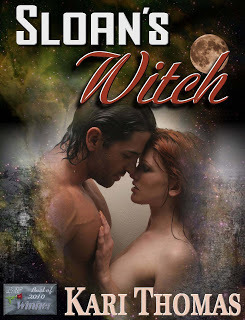
Amber: What stresses you aboutyour writing?Kari: Every time I stare at a blank screen I see these shadow words: "You are stressed even BEFORE you begin to write -- so don't try to fool yourself." Then I spend the next few minutes muttering "am not, am not!"
Seriously, I think it's the thought that, as a romance author, I face A LOT of competition and I know that in order to succeed I have to do my very best. But what IS my very best? The best editing job? The best plot idea? The best characters? Because of those worries, my Internal Editor is constantly on and my Muse fights with it. It's not a pretty sight.
Amber: What do you do to relax?
Kari: I read. Crochet. Take a bubble bath. Shop. Eat chocolate. And not always in that order! Truthfully, one of the most relaxing for me is to soak in a hot bubble bath. If I was near a beach, I'd be there instead of anywhere else. I even play CD's that have water sounds, like beaches, waterfalls, streams gurgling. The sound of running water, rushing waves, roaring waterfalls really calms me. (Although I have to admit I threw away one CD of water sounds --- there was a croaking frog in the background. I can't stand distractions!)
Amber: What advice can you offer writers?Kari: Definitely find that special something that helps relax you, even if means experimenting with anything and everything. Stress does NOT make a good book, unless of course it's part of the plot. Exercise (groan, I don't even consider THAT!). Dance! Swim. Write emails to your fellow author friends and complain that you're stressed. Oh wait, that's MY trick. Paint. Make faces at yourself in the mirror. Oh wait, that's another one of mine. (grin) Try hobbies. Try relaxing CDs. There are so many options, that if you STAY stressed after attempting some of them ....then you're hopeless. LOL!
Excerpt from Sloan's Witch -
"Whereis this leading, Kassidy?" Hunter asked.
Itwas Sloan who asked the dreaded question. "How dangerous were those spellsyou performed while searching for Bri?"
Shewouldn't, couldn't look at him. The rough anger in his voice was doing thingsto her insides, because she didn't know if that volatile emotion was directedat her --or for her.
"Everyspell has consequences," she evaded. "Every witch is aware of that. Iknew I was taking a chance."
"Itwas so kind of you, Kass, to look for me." Briana smiled at her."But, I have this bad feeling you're going to tell us that the'consequences' had lasting effects. What exactly is a 'Twi-ing shade'?"
Therewas no other way to say it, except blurt it out in one breath and hope they--especially Sloan --didn't kill her on the spot. "It's an evil entity thatattaches to you if you happen to be wandering in the afterlife unprotected.It's able to follow you back and then follow you anywhere you go. It's...ableto leave death in its path simply by touch."
She'dnever heard half the creative, fiery cuss words Sloan and Hunter spit out. Shecringed. Briana had to finally tell them both to shut up. She lowered her head,resting her chin on sleeping Talia's curly head. She wanted to cry. She'd beendealing with the Twi-ing shade as best she could, never going anywhere aroundthe people in her care, always doing what she had to do by proxy or longdistance. But never once had she thought the shade would be able to follow herinto a parallel world. The thought of it unleashed here in Briana's modernworld was a nightmare.
"Howdo we deal with it?" Briana asked. "Are there any spells to send itback?"
Kassidyshook her head. "I've tried everything I can think of." Did she daremention the only solution that would send the shade back to the afterlife?There was no choice. She couldn't put innocent people at risk. "The onlyway to send it back...is for me to die."
Sothat's what 'dead silence' sounded like. It was so quiet she could hear her ownheart beat. She closed her eyes tight and waited for the outcome. She couldjust hear Sloan now "Well, if that's what it takes..."***
Kari Thomas is a multi-published romance author and freelance editor. She reviews books on "Kari's Korner Reviews" on her website. Author of nine books and several shorts, Kari is a voracious reader of paranormal romance, so most of her books are in that genre. Her latest, Surrender Her Touch, will be released December 2011 by Eternal Press. The hero, a dragon shapeshifter, is a bit different from her other shapeshifters.
Kari's paranormal romance short, Sloan's Witch, her first venture into indie publishing, is available for $.99 at Amazon, Smashwords, B&N, and ARe.
Kari loves to hear from readers! Looking for a freelance editor?Send her an email. Kari Thomas -
Love Romances'
BEST Paranormal Romance Author 2010! www.authorkari.com
Published on October 25, 2011 06:27
October 22, 2011
How Writers Relax - Amber Polo
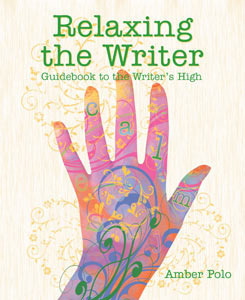
For my firstinterview I'm going to interview myself, so bear with this split personalitymonologue.
Amber 1: Welcome Amber, author of Relaxing the Writer: Guidebook to the Writer's High. What doyou find stressful about writing?Amber 2: Writingis the hardest and the most joyful thing I've ever done. Infinitevariety and grueling work seem to alternate. Never boring. Always exciting.
Amber 1: What keepsyou a relaxed writer?Amber 2: I admitwriting Relaxing the Writer was stressful, I would stop writing orediting and think, Am I the perfect example? I should be relaxed allthe time. But it's not like that. Relaxation is never an always state of mindand body.
Preparing to go into the sound studio to record the relaxation audiosI felt nervous and concerned that my voice would sound tense. But just as whenI taught relaxation in a yoga class, I moved my concentration to thestudent/listener and began.
Amber 1: Whatthings help you relax?Amber 2: Of courseyoga and breathwork are important to me. Over years of practice and teachingthey have become part of my life. Slowing my breath when I feel tense or movinginto stretches when my body is stiff is so routine I don't consider them "doing"anymore. Like many of the practices I discus in Relaxing the Writer, they aretools. I also love to walk and garden (what in Arizona I calltransplanting cacti and chasing tumbleweeds). There's also reading andlistening to audiobooks. For renewing myspirit, meditation and watching the sun rise over the mountains brings back myfeelings of inner calm.
Though not a vegetarianor vegan, going gluten-free has controlled cravings for sugar and eliminated binges (or made them more planned and controlled. ;) ). Ialso believe that, over time, lots of yoga and healthful eating changed my attitudes towardfood. My greatest failing is a deep dislike of exercise more aerobic thanwalking. And much too much sitting.
Amber 1: Whatadvice can you offer writers?Amber 2: I wroteit all down and more in Relaxing the Writer. In general, thebest advice is to find the three categories toincorporate into your writing life.
• Active – a physical activity that can be done several times a week• Meditative – aquiet practice to do daily or most days• Sensual Artistic– periodic activities that feed your creative soul
Amber 1: Sincefiction is filled with conflict, what do your characters do to release stress?Amber 2: Inoticed that when my heroines got too stressed I helped them out by sendingthem to a yoga class, off for a walk or, in Flying Free , taught herto meditate. Even in my Christmas novella, Christmas on Wherever Island , bothhero and heroine de-stress on a Caribbean island, diving, windsailing, andexploring.
Amber 1: Wouldyou like to share an excerpt?Amber 2: Glad youasked. This one is from Flying Free and takes place inMontezuma Castle National Monument, a magical place near my home. It's a prettyhot hand massage scene.

"So, how's your hand?" He took her right hand in bothof his. He began to vigorously rub her hand between his till it was warm. "Doyou often have pain in your hand? Numbness? Tingling?""Yes, yes, yes!" She noticed his long fingers flexibleas an artist's, strong as a sculptor's."Oil or lotion would make this even better," he toldher as he began a feather-light stroking from fingers to wrist, barely touchingthe skin on the top of her hand. By the time he switched to stroking from wrist tofinger tips she was aware of every skin cell. "Shouldn't there be music?" "Listen to the breeze move the leaves." He gentlyturned her hand up and placed his hand on her sensitive palm. He whispered,"Relax. Close your eyes." Eyes closed, she couldn't watch him or see his eyes onher and it was easier to relax.His thumb made small circular motions on her palm. Shecringed when he touched the pad of thumb muscles. He softened his stroke, thenmoved on to the base of each finger. When he massaged between her fingers,gently spreading one from the other, letting the muscles relax into thestretch, she felt her nipples harden.He rubbed each knuckle around the joint connections,then the joints closest to her fingertips. Pushing, exploring moving her fingerfor her, stroking each nail. She'd never even considered her fingernailssensitive as she reminded herself he was only touching her hand, here in thisvery public national park. Why did she feel naked?He turned her hand over and beginning at her wristmassaged the bones and tendons of the back of her hand. Slowly working up toher fingers, he again spread each finger from the other and pinched the web. Repeatingthe sequence of each joint, this time each touch was stronger and deeper, but nolonger felt invasive. He said, "The ring finger is aligned with the sun andsymbolizes love. Some peoples believe a vein starts in the ring finger and goesstraight to the heart." As she welcomed his fingers to each new place, sheknew the heart was not the only place in her body where she felt a directconnection at this moment. His touch felt like a very deep and loving kiss.She took in a breath when he worked the web betweenher thumb and first finger. She felt his touch play that subtle line betweenpain and pleasure.He held each finger and pulled from the base to thetip, stretching joints, teasing with a little shake to release more tension.When he pulled on her thumb, she expected pain, but felt pull and pressure as herotated it.She peeked at his intense expression and matched herbreath with his. He noticed and smiled. "Breathe into your hand."It sounded strange, but she did it and immediatelyfelt tingling.Next, he held her hand with both his hands,sandwiching her hand between his and pulled his hand away and repeated. Now herhand was humming so intensely she could barely hold it still. He placed her hand on his thigh so he could use bothhands to massage up her arm. Vibration moved up her forearm but she was moreconscious of the muscles of his leg moving under her fingers. "What does mylittle finger mean?" she asked to distract her mind from her desire to dig herfingers into his leg or slide them… "The little finger aligns with Mercury." He stretchedout her arm and flexed her wrist and pushed against it with his palm. Shepushed back. He worked the bones and muscles of her wrist finishing with morepressure to her thumb. She began to breathe heavily. He laid his hand on hersand slid his past her wrist to the soft skin of her arm leaving her with a slightcaress. If he kept on, she was going to have an orgasm right here surrounded bycottonwood trees and tourists.His voice broke the intensity. "Hands hold a lot oftension.""Tell me about it." She exhaled and opened her eyes."You've got a minor case of Blackberry Thumb, likecarpel tunnel from repetitive movements. Keyboards, mice, PDAs. But your handsalso grip so tight and hold on to everything."She laughed. He was right. How did he know? "What doesmy middle finger mean?" she asked, returning to the safer topic of planets."Self-assurance. It aligns with Saturn to correspond withsexual desire." "What about thethumb?" She was certain every finger couldn't have sexual meaning."Judgment and power—" "Yes! That's what I want." "Thumbs are a phallic symbol aligned with the planet Venus." She pulled away laughing. His touch had been to intimate, so sexual. And he'd only touched her hand while a busload of Asian tourists passed within a few feet of them.
Amber Polo is theauthor of short stories, two novels, a novella, Relaxing the Writer: Guidebook to the Writers High and her soon to be released, Relaxing the Writer: Relaxation, a 20-relaxationpractice for writers and other stressed humans. She is also thecreator of this blog. To share your relaxation practices, send her/me an email
Find informationabout Amber's books on her website and RelaxingtheWriter.com
Leave a commentfor a chance to win demo CDs of her soon to be released relaxation audios.
Published on October 22, 2011 06:42
October 10, 2011
Broken: Interruptions and Writer's Block
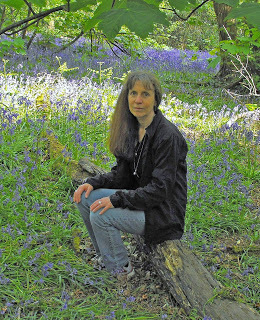
I've had a solid week of broken stuff. This means my projects go on hold while I engage in necessary repairs and purchases. It means I struggle for an hour to right a confused printer only to have it suddenly refuse to communicate with the computer again for the tenth time. When I go out and buy a new printer, instead of relief, I find I've just spent over an hour carefully choosing a rather handsome one for the combination of features, reputation, and cost, only to find that it has a fatal defect. Instead of rebirth and renewal, I have a stillbirth on my hands. Only I don't know about the defective chip in the printhead tape until I've struggled with the installation for three hours and finally call technical support in the morning.
When I rebox the darn thing, drag it back to the store, exchange it, and reinstall the (second) new one (in minutes this time), then the landline goes out. There's some sort of area problem, only I don't figure that out until I've spent a half hour trying to post a repair order online, and then another half hour spinning in an endless voice mail loop when I reach for the cell phone. When one of my loved ones gets through the loop on their first attempt, I know I'm a magnet for jellyfish.
At least the landline dial tone spontaneously reappears, but when that's a go, the garage door opener expires. Then the internet goes down about the time the garage door guy has replaced the switch three hours after his ETA. Only the internet doesn't come back up with the usual "repair connection" mouse click. Some human genius who refuses to own up to the deed has tried to clear the router and modem by disconnecting cables rather than the power cords, and placed one back in the wrong jack. Why is it we check the thing that matters most last?
*Sigh* In between my technology struggles are a whole raft of things that go along with having two teens leaving the nest – graduation preparations, college loan documents, entrance essays and videos, and on and on – you know, normal put-one-foot-in-front-of-the-other stuff that should go well but doesn't always, eating up the hours.
The good thing is that these jellyfish – piles of them! – are small obstacles. (Blogger's Note: to understand Kate's use of "jellyfish" see her blog Jellyfish Day.)
I'm thankful for small obstacles and disasters because they seem to dispel even larger obstacles and disasters and give me something to blog about.
Sometimes I find that these involuntary breaks from writing do me some real good even though I chafe at them. I get insanely happy when I finally have a workday with no interruptions. Karma, or fate, or that gosh darn cruel muse gave me a break one day out of the last ten. I don't mean a break from my writing, but a chance to write for a change. I latch onto a chance to write like a mutt with a tasty bone. I growl at others to stay away, something I need to work on.
Anyway, I spent a good twelve hours that day frolicking in a manuscript and revising. I found that my absence from the work was a boon. I re-entered the project with a fresh and eager mind, re-visioning the strengths and weaknesses of it in a new light, which is really the point of writing and editing, no?
It's always good to slow down and let your work simmer.It's natural to do this after completing a draft, but sometimes these infernal and frustrating breaks in the middle are even better. My subconscious mind seems to have worked that much harder for me while I was whinging (as they say in the UK, rhymes with binging) over the interruptions than it would have with my active, daily participation. Sometimes our subconscious minds just need a little space.
Life is funny like that. Things happen for a reason, and sometimes dealing with stuff like broken printers, phones, routers, and garage door openers has a cosmic overtone (I picture confronting a jellyfish and having a sundog burst out of it, sci-fi style).
You could apply this principle to difficult manuscripts and the spectre of writer's block. I've never felt that there is such an animal, but yes, there are times when writing doesn't go well or fallow periods in which the spirit is willing but the mind goes blank.
Stuckness always happens for a reason. More often than not, writer's block is simply a signal that there's something wrong with a manuscript. Our subconscious minds know this and refuse to go further until the problem is corrected. The problem could be an awkward scene, a character defect, or that we're telling a story from the wrong POV. Whatever the issue, we're grounded until we've solved it. We often refuse to accept this and keep trying to go over, under, or around the problem rather than letting the work simmer.
These writing dilemmas usually fall away with a sudden realization. This may not happen as quickly as we'd like. In fact, I can despair here again why we check the thing that matters most last. At any rate, these creative impasses are rarely solved by the rational mind. Solutions seem to appear from the intuitive netherworld, a gift from the subconscious mind. This undermind, as I call it, basks in creative ferment and works very hard on our behalf. All we have to do is wait patiently (or impatiently, as is often the case) until it sends up a eureka moment signal.
Sometimes it doesn't hurt to ask the subconscious mind to help, please-please. Like anyone else, it responds nicely to well-mannered requests. Asking may even spur it to respond quicker. The subconscious mind also works when we haven't asked it to, as in the case of my string of interruptions being rewarded with a little more clarity when I returned to my work.
I guess what I'm trying to say is that we can use these broken times to our advantage. They don't feel good, but sometimes the struggle opens up to become the path. Not that it's easy to let go and let things happen naturally. This takes practice and lots of reminders. Building new, positive habitual patterns is as hard to accomplish as undoing negative habitual patterns.
Clue: in Buddhist philosophy, it's said that more miseries come from trying to avoid misery. . .
To find out more about Kate visit Jellyfish Day and Katerwriter.
Kate Robinson writesfiction, non-fiction, and poetry from the urban wilds near Los Angeles.Sheearned a BA in Anthropology with emphasis in Museum Studies from PrescottCollege and an MA in Creative Writing from the University of Wales,Aberystwyth.
Kate is also the spirit of Starstone Lit Services which specializes in proofreading, editing, evaluation, and creative consultation for fiction, memoir, and narrative nonfiction writers.
[image error]
Kate'slatest story, "Thirteen", a middle-grade fantasy written with co-author JoeDiBuduo, is currently available in the anthology "31 Nights of Halloween" (RainstormPress, 2011).
Published on October 10, 2011 13:42
Around the Writer's Block
Some dismiss writer's block as simple procrastination or just "in your head." Others label it a serious cognitive or emotional problem that requires professional help. Blocks can take a variety of forms, from lack of ideas to compulsive editing. The affliction varies in intensity from trivial or temporary to devastating.
Isaac Asimov said, "Writer's block is a sign that you're working on the wrong thing."
Tom Wolfe called writer's block "…a misnomer. What is labeled writer's block is almost always fear."
In The Midnight Disease: The Drive to Write, Writer's Block, and the Creative Brain, Alice Flaherty argues that literary creativity is a function of specific parts of the brain, and that block may be the result of disrupted brain activity in those areas.
Books, blogs, articles, and websites offer suggestions for those times when cleaning the toilet bowl seems more fun than facing a blank screen. Although not every writer's block can be cured by relaxation alone, almost every prescription for beating it down includes relaxation techniques as a major element.
Excerpt from "Relaxing the Writer: Guidebook to the Writer's High" Next, we'll hear what Kate Robinson has to say about writer's block.
Published on October 10, 2011 12:45



